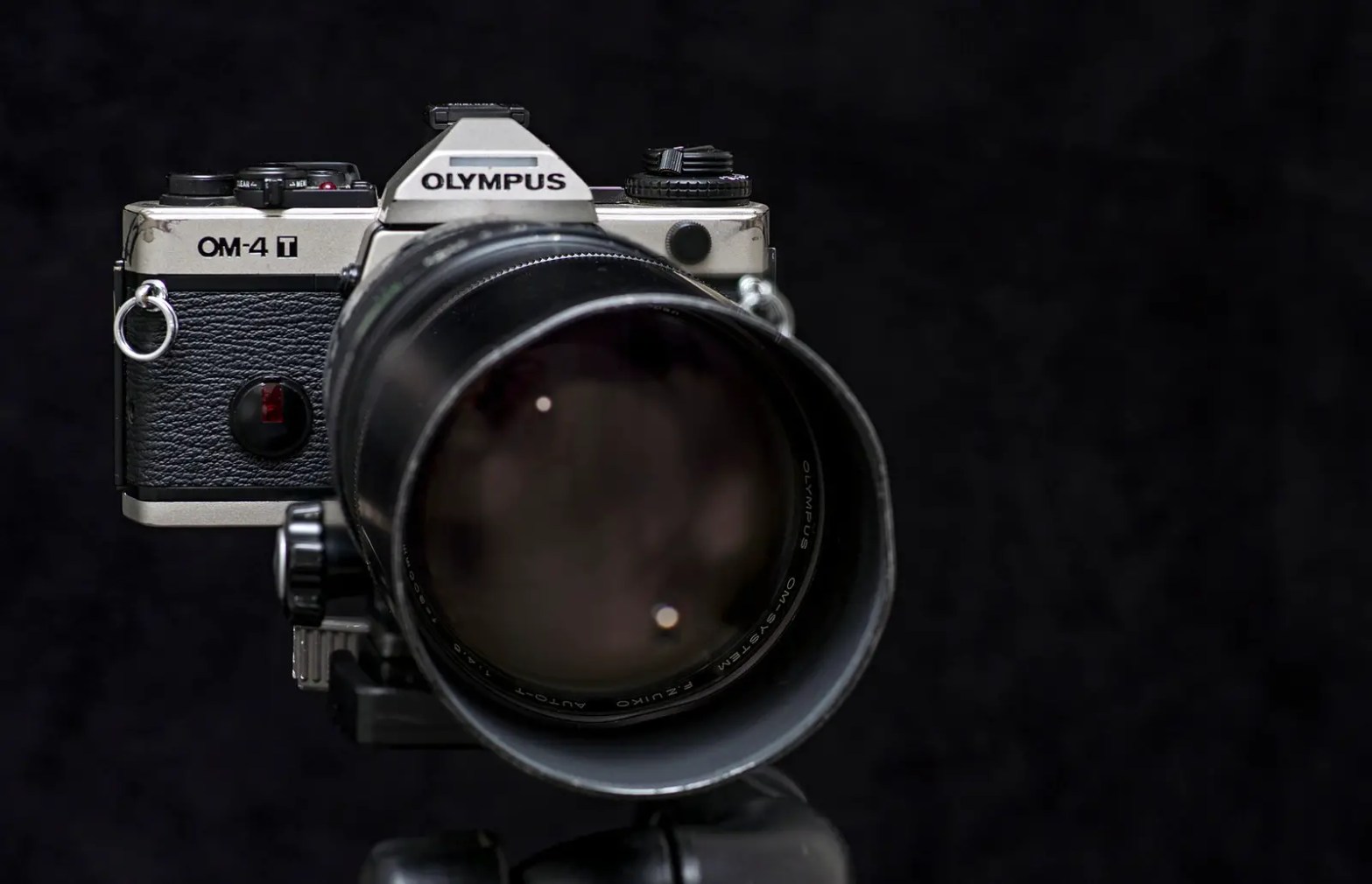The OM-4 represented the pinnacle of Olympus film camera development. The multi-spot metering function, unique to the OM-3 and OM-4 bodies, afforded photographers the greatest manual exposure control in any film camera produced. The OM’s multi-spot metering mode works by taking a spot meter reading from the center of the focusing screen each time the photographer presses the multi-spot button, up to eight readings.

Olympus OM-4T and Olympus Zuiko 300mm f/4.5
For a simple spot meter reading, push the button once. But the magic happens when the photographer pushes it a second, or third, or more, time. Starting with the second exposure, the camera begins to average the spot meter readings into a single, near-ideal measurement. This allows the photographer – when used correctly – to record images with highly precise automatic exposures.
The photos in this article are all on new Kodak EKTACHROME E100 and historically, the OM-4 spot and multi-spot metering made this camera ideally suited for slide film photographers. In fact, no camera produced besides the OM-3 and OM-4 can yield such consistent and even exposures on slide positives. The images in this article all show that.
Each photo’s capture process used either a single or multi-spot meter reading. Further reducing the amount of a scene available to the camera to meter off of, each photo in this article was taken on the 300mm f/4.5 Zukio lens, a lens with a mixed reputation.





The 300mm f/4.5’s reputation as soft is unearned. Wide-open it performs as well as any contemporary lens from the same price and better than most of them. Stopped down, the performance exceeds that of many contemporary lenses. On slide film, the Olympus Zuiko 300mmm f/4.5 renders colors and contrast beautifully. Two of the images in this set exhibit some softness along that top. That arose from an issue with the digitizing process, not the lens.
Kodak EKTACHROME E100, paired with an exceptional meter, presents photographers with a rich palette of gorgeous and saturated colors enhanced by a steep gamma curve characteristic of the best slide films. For top-shelf results in 35mm, few, if any, options exist that improve on an Olympus OM-3 or OM-4 paired with EKTACHROME E100.
~ David
Submit your 5 Frames… today
Get your own 5 Frames featured by submitting your article using this form or by sending an email via the contact link at the top of the page.
Share your knowledge, story or project
The transfer of knowledge across the film photography community is the heart of EMULSIVE. You can add your support by contributing your thoughts, work, experiences and ideas to inspire the hundreds of thousands of people who read these pages each month. Check out the submission guide here.
If you like what you’re reading you can also help this passion project by heading over to the EMULSIVE Patreon page and contributing as little as a dollar a month. There’s also print and apparel over at Society 6, currently showcasing over two dozen t-shirt designs and over a dozen unique photographs available for purchase.








One response to “5 Frames… With Kodak EKTACHROME E100 (EI 100 / 35mm format / Olympus OM-4T)”
Did you expose the Ektachrome at 100 or underexpose it a bit?